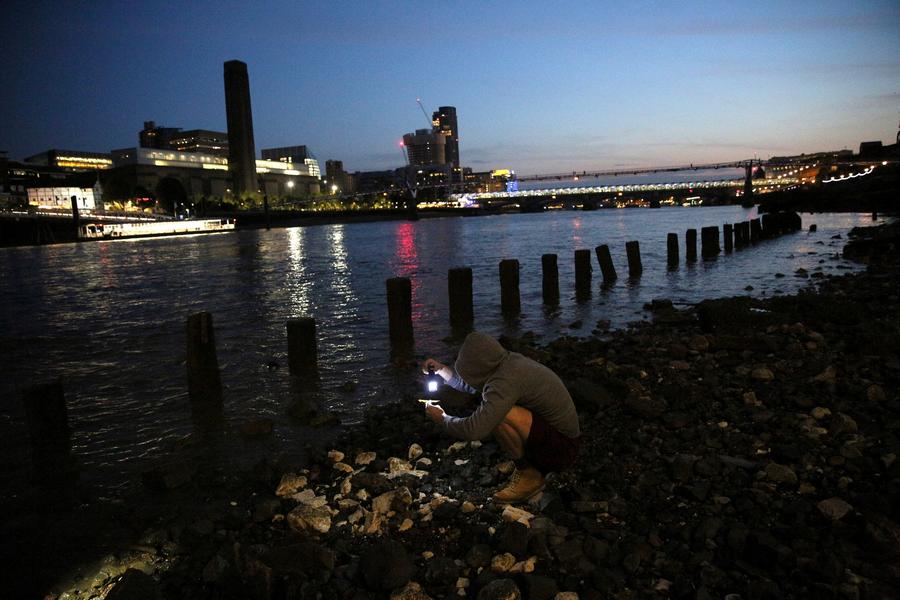In photos: Searching for history along the Thames
Updated: 2016-08-29 09:29
(Agencies)
 |
| A mudlark uses a torch to look for items on the bank of the River Thames in London, Britain, June 6, 2016. [Photo/Agencies] |
Mudlarking is believed to trace its origins to the 18th and 19th century, when scavengers searched the Thames' shores for items to sell.
These days, history and archaeology fans are the ones hoping to find old relics such as coins, ceramics, artifacts or everyday items from across centuries. They wait for the low tide and then scour specific areas of exposed shores.
"If you're in a field you could be out all day long, with the river you're restricted to about two or three hours," mudlark Nick Stevens said.
While many just use the naked eye for their searches, others rely on metal detectors for which a permit from the Port of London Authority is needed. Digging also requires consent.
The select Society of Thames Mudlarks counts just a few dozen members, who have the necessary licences and can access restricted areas along the river. Collaborating with the Museum of London, the mudlarks record their finds with the Portable Antiquities Scheme. Any item over 300 years old must be recorded.
